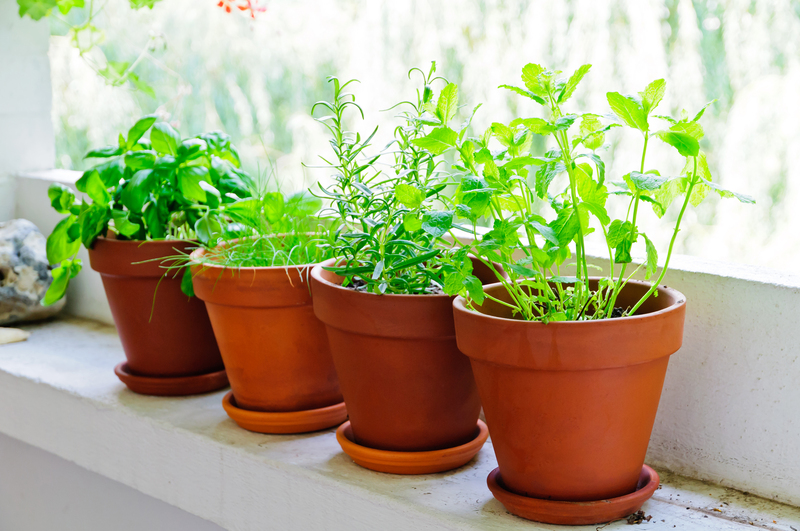How to Tame the Wilderness: A Garden Overhaul Guide
Posted on 07/09/2025
How to Tame the Wilderness: A Garden Overhaul Guide
Do you look at your backyard and see a tangled, wild mess where your dream garden should be? Transforming an unruly, overgrown plot into a vibrant, thriving paradise can be daunting, but with the right approach, you'll not only tame the wilderness--you'll make it yours. This comprehensive garden overhaul guide will take you step-by-step through reclaiming neglected green spaces and crafting an outdoor haven.
Understanding Your Wilderness: Assess and Analyze
Every aspiring gardener's overhaul journey begins with observation and discovery. Before you charge in with shears and shovels, take stock of your wild garden:
- Map the Terrain: What is the size and shape of your garden? Are there slopes, shaded areas, or soggy patches?
- Identify Existing Flora: Which plants are present? Some "weeds" may be native wildflowers or desirable shrubs worth saving.
- Spot the Problems: Where have invasive species taken hold? Do you see dead trees, tangled brambles, or hidden trash?
- Note Sunlight Patterns: Watch your garden throughout the day. Where does sunlight fall at different hours?
- Test the Soil: Good gardening starts beneath the surface. Check for soil composition, drainage, and pH balance.
Thorough assessment helps tailor your garden transformation, so you don't lose precious native plants or overlooksite conditions.

Setting a Vision: What Kind of Garden Do You Want?
As you strive to tame your overgrown yard, let your dreams guide your design. Do you want:
- A formal garden with neat beds and symmetrical paths?
- A wildlife paradise featuring native plants for pollinators?
- A productive kitchen garden for herbs, vegetables, or fruit trees?
- A relaxing retreat with lush lawns and shaded seating?
Sketch a simple plan or use garden design software--start broad and refine as you go. Your garden overhaul will be most rewarding when it reflects your lifestyle and personality.
Clearing the Chaos: Step-by-Step Overhaul Preparation
1. Remove Debris and Unwanted Materials
Give yourself a clean slate:
- Clear away fallen branches, trash, and old garden fixtures.
- Dispose of rotten wood, rusted tools, or broken pots safely.
- Sort waste into compostable and non-compostable piles.
A clutter-free environment makes the rest of your work easier and safer.
2. Tackle Invasive Species and Weeds
Wild gardens often harbor fast-spreading invaders like bindweed, brambles, or Japanese knotweed. Taming the wilderness starts here:
- Use a sharp hoe or spade to dig out roots.
- Apply eco-friendly weed control methods--avoid harsh chemicals if possible.
- Cover cleared areas with cardboard or mulch to prevent regrowth.
Persist: some weeds need repeated removal for complete eradication.
3. Prune, Cut Back, and Thin Overgrowth
- Trim back overgrown hedges and trees--start with dead or diseased branches.
- Thin shrubs for better air flow and light penetration.
- Use sharp, sanitized tools for clean cuts that won't harm the plants.
Pruning reveals the underlying structure of your garden, making space for new growth.
Soil Rescue and Conditioning: Building the Right Foundation
Analyze and Amend Your Soil
The backbone of a garden overhaul is healthy soil. Have your soil tested (many local extension offices will do this for free or affordably) and:
- Amend soil structure with compost, leaf mold, or well-rotted manure if it's compacted or depleted.
- Adjust pH using lime (to raise pH) or sulfur (to lower it), depending on what your plants prefer.
- Improve drainage in boggy areas with raised beds or by incorporating sand and organic matter.
Mulching and Moisture Management
Mulch is your friend in taming wild gardens:
- Suppresses weeds, retains soil moisture, and gradually improves fertility.
- Lay down a thick layer (2-3 inches) of shredded bark, straw, or composted leaves around plants and over bare areas.
Designing and Planting Your New Garden
Choosing the Right Plants
Your garden's rebirth depends on appropriate plant selection. Consider:
- Native species: They require less maintenance and support local biodiversity.
- Perennials: Flower and return year after year for lasting beauty.
- Evergreens: Provide structure and color through all seasons.
- Edibles: Blend herbs and vegetables into ornamental beds for practical beauty.
Group plants by water, light, and soil needs to ensure thriving growth.
Planning Pathways and Outdoor Living Spaces
Well-placed paths not only help you navigate your garden--they shape its personality:
- Laying stepping stones, gravel, or wood chips creates routes through the space.
- Leave room for benches, bird baths, or small patios to enjoy your handiwork.
Inviting outdoor seating encourages you (and guests) to linger and appreciate your tamed wilderness.
Planting: Laying the Roots of Your Garden's Future
- Dig holes twice as wide as root balls but no deeper.
- Water in new plants thoroughly and regularly for the first weeks.
- Stagger heights, textures, and bloom times for ongoing visual interest.
Maintenance: Keeping the Wilderness in Check
Create a Realistic Maintenance Schedule
Consistency is key. Set aside regular time for:
- Weeding: Little and often prevents big problems.
- Pruning: Spring for flowering shrubs, winter for trees.
- Feeding and watering: Fertilize according to plant needs and local climate.
- Mulching: Top up annually to maintain weed suppression and moisture.
Well-maintained gardens remain manageable and beautiful for years to come.
Seasonal Tasks and Planning Ahead
- Spring: Sow seeds and plant out tender crops.
- Summer: Deadhead spent blooms, mow lawns, and irrigate as needed.
- Autumn: Plant bulbs, clear leaves, and prepare beds for winter.
- Winter: Prune dormant trees, tidy, and dream up new improvements!
Each season brings its own joys and chores to your newly tamed garden.
Wildlife and Sustainability: Keeping Balance in Your Overhauled Garden
As you transform wild gardens into inviting spaces, consider sustainability and habitat for local wildlife:
- Leave a corner of your garden a little wild for birds, bees, and hedgehogs.
- Install bird boxes, insect hotels, and water baths.
- Avoid pesticides--rely on natural predators and companion plants for pest control.
- Use rain barrels or greywater for eco-friendly irrigation.
- Choose permeable materials for paths and patios to support healthy soil life.
A balanced ecosystem supports itself and makes your garden a haven for you and your local community of creatures.
Tackling Common Garden Overhaul Challenges
Overcoming Persistent Weeds and Problem Areas
Some challenges are universal when you reclaim wild gardens:
- Persistent weeds: Repeated digging, mulching, and patience are essential!
- Shade issues: Choose shade-loving plants like ferns or hosts for dim spots.
- Poor drainage: Install raised beds or improve the soil as outlined above.
- Rocky or compacted ground: Rent a rototiller, or build on top with raised planters.
Budgeting and Resources
- Start small--overhaul a section at a time if resources are limited.
- Use free mulch and compost from local programs.
- Propagate plants from cuttings or swap with neighbors.
- Source garden tools secondhand--quality is often more important than newness.
Creativity and patience go a long way toward a beautiful garden overhaul on any budget.

Celebrating and Enjoying Your Tamed Garden
With regular effort, you'll watch your transformed wilderness bloom into a sanctuary of beauty and calm. Host a garden party, invite friends to share in your success, or simply relax outdoors with a book. Remember:
- Your new outdoor space is a living project--a blend of order and nature, creativity and patience.
- Practice kindness to yourself and your garden--every step toward taming the wild is an accomplishment.
Final Thoughts: The Art and Joy of Taming Your Wild Garden
Reclaiming and overhauling a wilderness garden is more than just landscaping--it's an act of renewal and self-expression. By assessing your space, planning intentionally, and nurturing the land, you create a unique haven that grows in beauty and value each year. Whether your plot is large or small, messy or mysterious, taming the wilderness puts you in touch with nature and the deep satisfaction of nurturing life.
So grab your gloves, sharpen your spades, and take the first step toward your dream garden today. The wilderness awaits transformation--by your hands!

